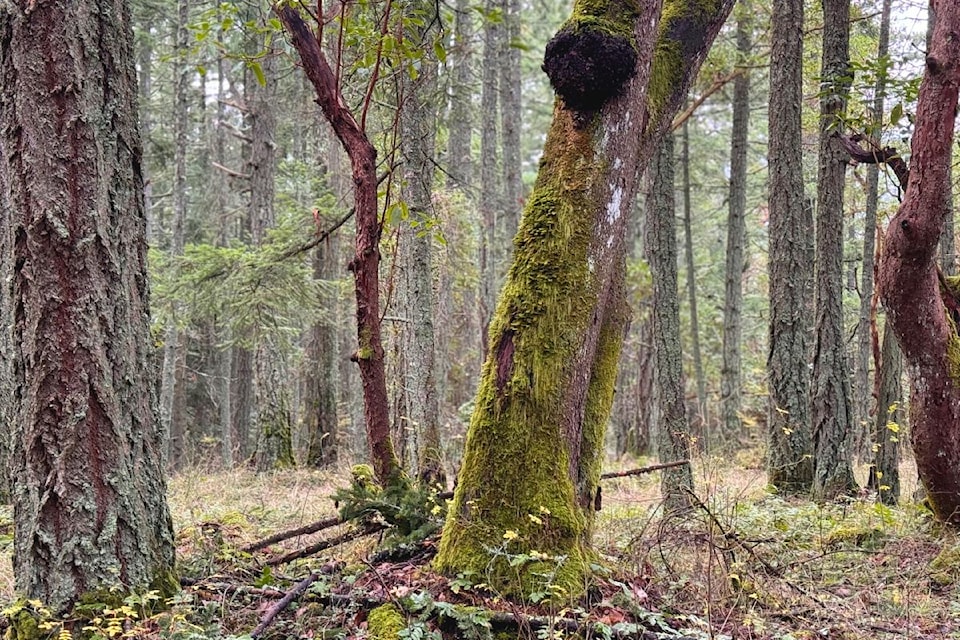The largest remaining tract of old-growth and mature Douglas-fir forest on the Saanich Peninsula is in the beautiful LAU,WELNEW/John Dean Provincial Park in North Saanich.
It sits next to six hectares of land which is now designated as a protected extension of the park.
On Tuesday (Nov. 26), BC Parks Foundation announced the purchase of three parcels of land that run along the park's edge which will now protect one of the last stands of old-growth Douglas fir and Garry oak on the Saanich Peninsula.
The property was listed for sale in November 2023. The listing featured trees with trail markers where prospective homeowners could build a home.
“Thankfully the foundation was able to raise money to buy the land before anybody else did,” said Maureen Dale, president of the Friends of John Dean Park Society. "The land was perfect for purchase and park addition because it had no buildings or other structures."
BC Parks charitable partner reported that they were able to raise $1.6 million from a number of donors, including Environment and Climate Change Canada and the Wilson 5 Foundation.
“We have a community of tens of thousands of British Columbians who love B.C. and want to keep it beautiful,” said foundation CEO Dr. Andy Day. "We use crowdsourcing and community outreach for the majority of our work. In this case, we discussed the significance of this region and how connected it is to LAU,WELNEW/John Dean Park."
The foundation plans to meet with the various stakeholders to develop an integrated plan to explore the relationship between the land and the park.
"I think one of the interesting things we discovered about this property was that you'll find different ecosystems right next to each other – a meadow with Garry oak trees and wildflowers, a gorgeous bluff ecosystem with large trees, and a variety of wildlife species mixed in," Day said.
The land is home to a forest of coastal Douglas fir, one of the most endangered ecosystems in British Columbia.
Aside from its rich biodiversity, the area also holds significant cultural importance to local First Nations, having played a central role in their people’s stories.
During the official announcement, Mavis TIWENOMOT Underwood, from TSAWOUT First Nation, stood in the middle of the park and the newly protected land in quiet reverence and shared how his father, George, used to snare rabbits and hunt deer and birds with a slingshot within the same forest.
“We were the best-fed family around and he shared that with everyone,” she said. "We knew a lot about the land and culture and we wanted to be able to share that so this is a huge achievement and I'm just glad to be part of it.”
Underwood calls the land a place of refuge, not just for the WSANEC people, but for everyone.
She hopes to build a forward way of thinking for the children through the newly protected land by treating it as a living and breathing educational curriculum that will give them a sense of belonging to something important.
“Having the land to do that in freedom is crucial," she said.

